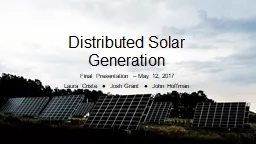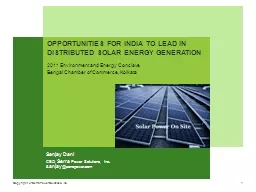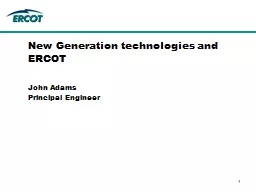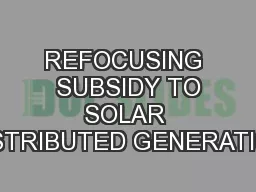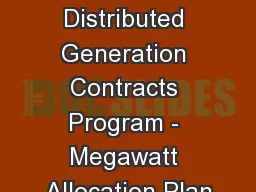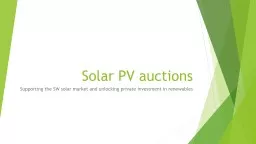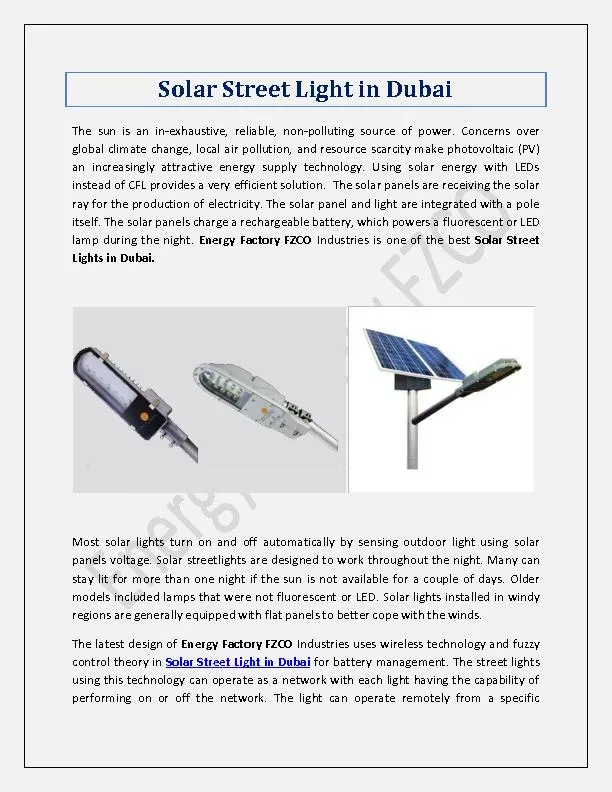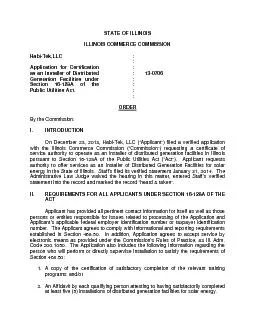PPT-Distributed Solar Generation
Author : debby-jeon | Published Date : 2018-10-20
Final Presentation May 12 2017 Laura Criste Josh Grant John Hoffman Distributed Generation Distributed generation is energy at the point of consumption Common
Presentation Embed Code
Download Presentation
Download Presentation The PPT/PDF document "Distributed Solar Generation" is the property of its rightful owner. Permission is granted to download and print the materials on this website for personal, non-commercial use only, and to display it on your personal computer provided you do not modify the materials and that you retain all copyright notices contained in the materials. By downloading content from our website, you accept the terms of this agreement.
Distributed Solar Generation: Transcript
Download Rules Of Document
"Distributed Solar Generation"The content belongs to its owner. You may download and print it for personal use, without modification, and keep all copyright notices. By downloading, you agree to these terms.
Related Documents

